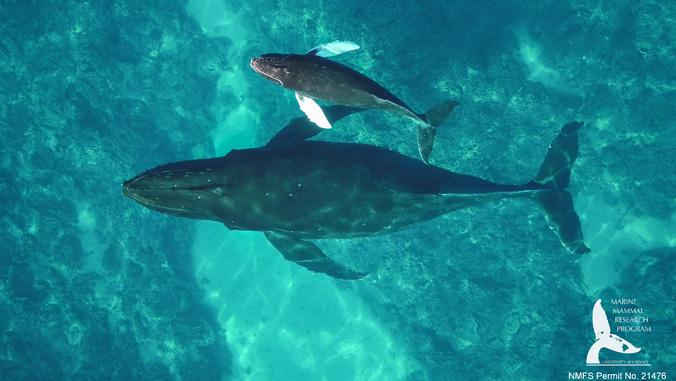Drone Technology Reveals Insights into Humpback Whale Mother-Child Dynamics
Study Highlights Energy Demands and Declining Reproduction in North Pacific Humpback Whales
Using Drones to Monitor Humpback Whale Health
Researchers at the University of Hawaiʻi at Mānoa’s Hawaiʻi Institute of Marine Biology have used drones to analyze the health of nursing humpback whale mothers and their calves during their migration across the Pacific Ocean. The findings, published in The Journal of Physiology, shed light on the energy costs and challenges faced by these whales, especially amidst a backdrop of declining reproduction and calf survival rates in the North Pacific.


The team employed drone-mounted cameras to measure calf growth and maternal body conditions shortly after birth in Hawaiʻi. These data were compared with measurements taken at Southeast Alaskan feeding grounds, which included pregnant and lactating females as well as those with unknown reproductive statuses.
“A total of 2,410 measurements were taken from 1,659 individuals, with 405 repeat measurements from 137 lactating females used to track changes in maternal body volume over migration,” explained Martin van Aswegen, Marine Mammal Research Program (MMRP) PhD candidate and lead author of the study.
Energy Costs and Maternal Sacrifices
The study revealed significant energy expenditures by lactating mothers. Over a six-month period, lactating females lost an average of 17% of their body volume, while calves’ body volume increased nearly 395%. Mothers in Hawaiʻi burned through about 214 pounds of blubber daily, equivalent to losing roughly 50 tons of krill over 60 days.
“The energy they used lactating surpassed the total energetic cost of their year-long pregnancies,” said the researchers.
At feeding grounds in Southeast Alaska, lactating mothers gained weight at slower rates compared to pregnant and non-pregnant females. Lactating females gained only 32 pounds daily, while pregnant females gained six times that amount.
“The surprising part of this study was our ability to find the same individual mothers and calves over great distances and time periods,” van Aswegen noted. “To measure the same whales over 3,000 miles apart over a period of roughly 200 days is truly remarkable and provides such valuable data for the questions we were asking.”
Declining Reproduction and Survival Rates
The research builds on prior studies documenting sharp declines in humpback whale reproduction. Between 2013 and 2018, mother-calf encounter rates in Hawaiʻi dropped by 76.5%. In Southeast Alaska, calf survival rates fell tenfold from 2014 to 2019, with researchers attributing these trends to a global marine heatwave that disrupted food webs and prey availability.
“It is believed that humpback whales were unable to acquire sufficient food, resulting in nutritional stress and declines in reproduction,” researchers concluded.
The team emphasized the importance of understanding these energy dynamics for future conservation efforts. “This work forms the basis for future studies investigating the energetic demands on humpback whales,” said Lars Bejder, MMRP director and co-author.
Collaboration and Funding
The project was supported by partnerships with organizations like the Alaska Whale Foundation and Pacific Whale Foundation. Funding came from various sources, including the Office of Naval Research, Netflix’s Our Oceans initiative, the National Geographic Society, and the North Pacific Research Board.
“This study showcases how teamwork across disciplines and institutions helps us uncover the intricate relationships between maternal health, calf growth, and environmental stressors,” said Jens Currie, MMRP PhD candidate and chief scientist at the Pacific Whale Foundation.
For more information about the Marine Mammal Research Program, visit MMRP’s website. Additional details on the Pacific Whale Foundation’s work can be found here.
This study highlights the potential of drone technology to enhance marine research, offering valuable insights into the challenges faced by humpback whales amid changing ocean conditions
Want DRONELIFE news delivered to your inbox every weekday? Sign up here.
Read more:


